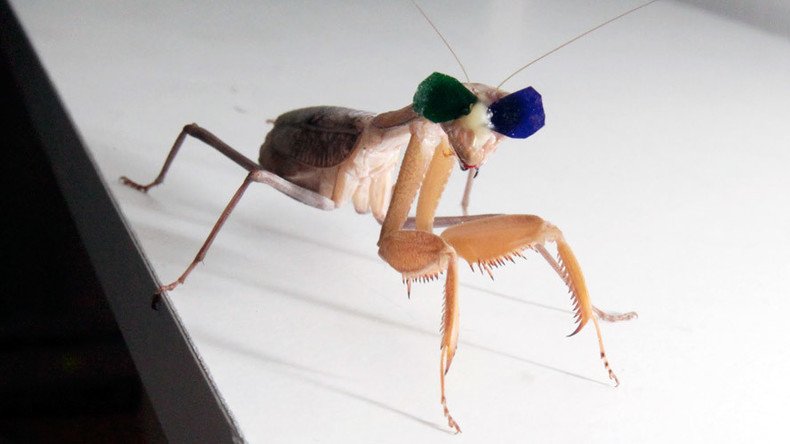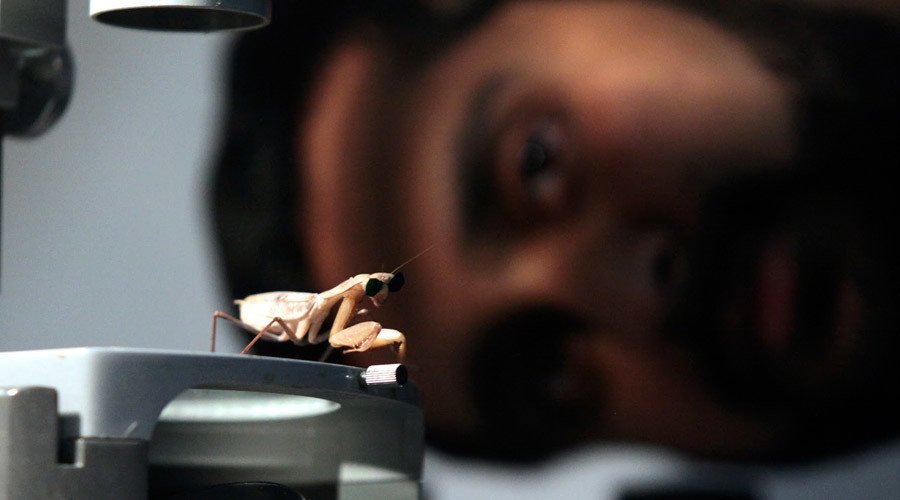Bug eyed! Insects proven to hunt with 3D vision

Insects have been proven to use 3D vision after a team of scientists fitted them with 3D glasses with tiny red and blue lenses.
Scientists at Newcastle University created a miniscule insect “cinema” to test the vision of the creepy crawlies by fitting them with old-style color filter 3D glasses, held in place with beeswax.
The team has been working on the project for almost two years, and have finally confirmed that praying mantises do use 3D vision to hunt their prey.
Results gathered by the scientists could also help develop visual perception in robots, the team said.
The experiment involved showing the mantises an image of a bug, both in 2D and 3D. When the image was in 3D, the mantises pounced. When the image was in 2D, the bugs ignored it.
Professor of vision science and study leader Jenny Read said mantises are sophisticated animals.
Tiny glasses confirm #3D vision in insects
https://t.co/BrkHX8zICbpic.twitter.com/YaNy70IYum
— Newcastle University (@UniofNewcastle) January 7, 2016“Despite their minute brains, mantises are sophisticated visual hunters which can capture prey with terrifying efficiency.
“We can learn a lot by studying how they perceive the world.
“Better understanding of their simpler processing systems helps us understand how 3D vision evolved, and could lead to possible new algorithms for 3D depth perception in computers.”
When the researchers first began testing the insects, modern 3D technology, which uses circular polarization to separate the images from both eyes, failed to work because their eyes were so small.
Dr Vivek Nityananda, a sensory biologist at Newcastle University, said they then examined older methods to try and gain information.
“When this system failed we looked at the old-style 3D glasses with red and blue lenses. Since red light is poorly visible to mantises, we used green and blue glasses and an LED monitor with unusually narrow output in the green and blue wavelength.
“We definitively demonstrated 3D vision or stereopsis in mantises and also showed that this technique can be effectively used to deliver virtual 3D stimuli to insects.”
The team will use the results to try and better understand how human vision evolved, and develop more ways of adding 3D tech to computers.














